Can ChatGPT Be Detected by Humans and AI Detectors?
Since people discovered ChatGPT, it has become their best study or work buddy, helping them craft well-structured and smart texts.
Thanks to ChatGPT’s capabilities to generate human-like responses, its uses extend beyond writing content to create lesson plans and presentations, planning your trip, and even help you with job applications.
Although creating content with ChatGPT and other AI writing tools is fast, easy, and extremely convenient, it has raised some questions regarding plagiarism and academic integrity.
As convenient as ChatGPT is for writing, students have started using ChatGPT to write their university writing assignments. Also, academic, research, or student work may require writers to present their personal perspectives and critical thinking.
So people started looking for ways to crack down on ChatGPT-generated content to make sure texts are unique and written by humans.
Fortunately, there are methods to detect ChatGPT, either by looking for signs on ChatGPT use in the text or using detection tools to catch AI-generated content. In this post, we’ll cover how to detect ChatGPT-written text.
Can you tell if a text has been written by ChatGPT yourself
AI detection software is mostly used to detect text generated by ChatGPT or other AI tools. However, there are telltale signs that you can look for to tell if the text you are reading has been written by ChatGPT.
- Check for false information - it’s generally known that ChatGPT fabricates facts to provide answers because it prioritizes providing plausible-sounding answers that can sometimes be inaccurate. Therefore, if there are any facts in the text like dates, events, or figures, do a web search to check if they are true. If they are inaccurate or implausible, the text might be created by ChatGPT.
- Grammatically correct, but nonsensical sentences - As a large language model, ChatGPT is trained to predict and insert the statistically most probable word in a sentence. So, if you are reading a sentence that looks good, but it doesn’t make any sense, and you can’t understand the meaning, the chances are that you are reading a ChatGPT-generated sentence are high.
- Extremely logical and cohesive sentences - ChatGPT usually creates a text in highly logical order using transitional words such as ‘firstly, secondly, thirdly, and in conclusion.’ Again, when you read the sentences, they make sense, but the reading is too dry and generalized, and lacks a human touch. Even though humans use these transitional words sometimes, AI-generated texts unfailingly have them, which is a clear sign.
- No grammatical or spelling mistakes - Although we always strive to remove any grammatical and spelling errors, humans are expected to make minor mistakes in their text. ChatGPT, on the other hand, creates grammatically flawless sentences. So if you run the text in a grammar editor and proof-editor and it’s impeccable, you might be looking at a ChatGPT-written article.
- Ask ChatGPT to create a similar piece of content - If you suspect that ChatGPT produced the piece of text you are reviewing, you can double-check that by using ChatGPT itself. Just go to the AI chatbot and ask it to create a piece, explaining the type of content, main points, and structure. For example, if you are reading an article on “The impact of social media on mental health,” ask ChatGPT to write the article on the same topic with the same subheadings and points.
How to detect if a text has been written with ChatGPT using AI detection tools
The more reliable way to detect a CHatGPT-written text is to use AI detection tools. Many free tools on the web offer both plagiarism detection and AI-written content.
But before diving into the list of AI tools, we need to talk about the limitations of these tools.
AI detection tools are not foolproof
The AI detection tools that are available for users are not always accurate. This is because no AI language model is perfect and capable of generating flawless responses.
The popularity of ChatGPT has led to a surge in the development of AI detection and evasion software. There seems to be an ongoing competition between ChatGPT text detectors and those who try to evade them. However, one can never completely rely on the accuracy of the detectors.
Cases have been reported where AI detection tools have identified human-generated text as AI-generated. Additionally, those who use ChatGPT to craft essays can modify certain words or replace them with synonyms to evade detection by AI systems. It is essential to bear in mind that AI detection tools are not infallible and may not always detect AI-generated content with 100% accuracy.
Another effective method users steer clear of detection is by prompting ChatGPT to generate content that is atypical for AI or not easily detected by AI tools.
Additionally, AI detectors cannot detect the content if it was translated from another language or paraphrased. Moreover, some AI text detectors can’t identify AI text if it’s below 1000 characters.
One of the biggest limitations is that while most AI text detectors can identify text produced by different language models, some detectors can only identify ChatGPT-generated text.
🚀 You might also want to check out: What to Avoid Sharing with ChatGPT if You Use It for Work
Detecting ChatGPT and AI-generated text with AI detectors
These are some of the most popular and widely used AI text detection tools.
AI Text Classifier
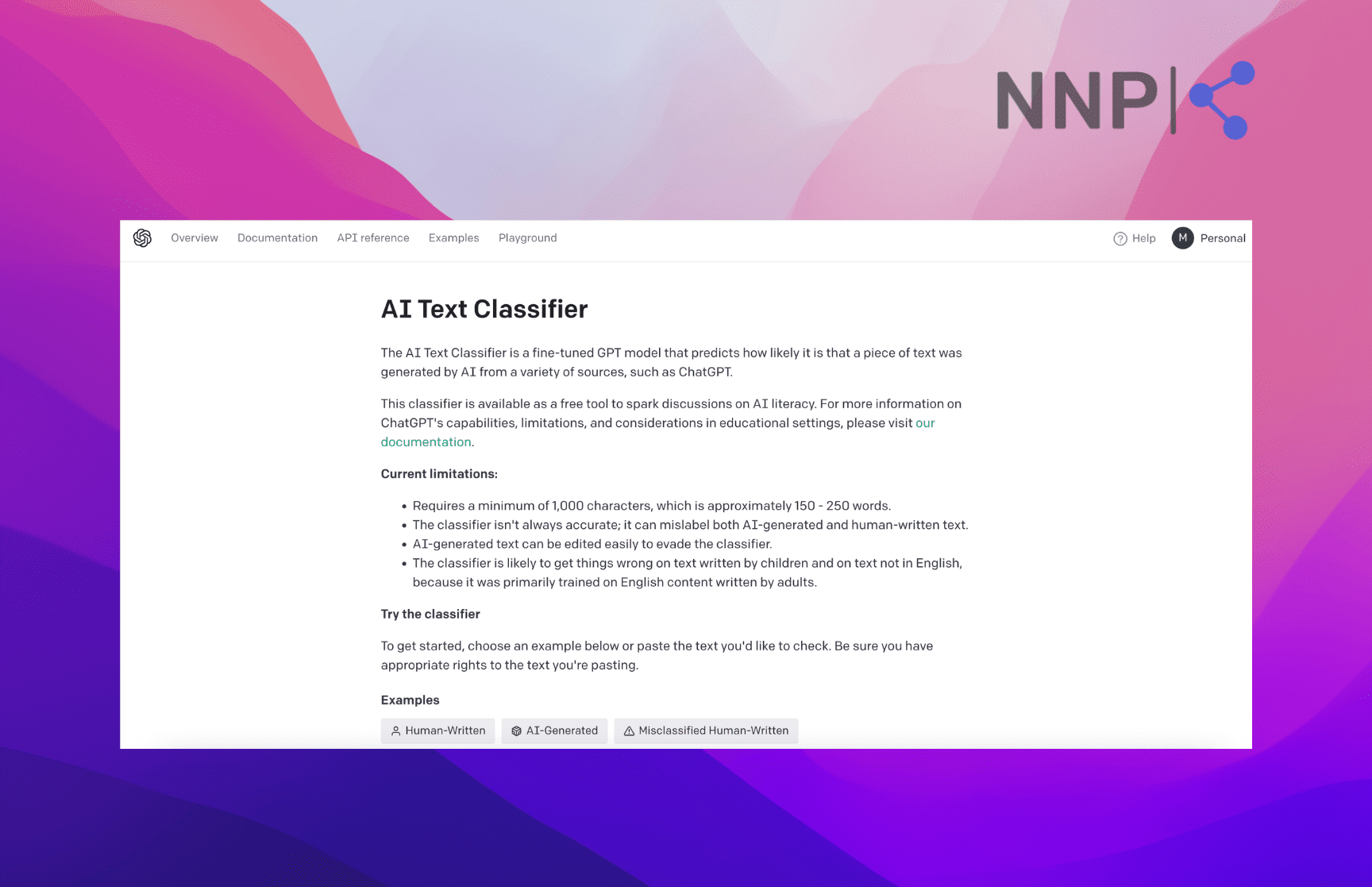
The first on the AI detectors is no other than OpenAI’s AI Text Classifier. After releasing the most advanced AI chatbot so far, ChatGPT, they also released a tool to identify if a text has been generated by ChatGPT.
The AI Text Classifier is a free tool that predicts the likeliness of a text generated by ChatGPT or other AI.
There are several things to consider when using the AI Text Classifier. OpenAI have openly listed the AI detector’s limitations and requirements: The text submitted has to be above 1,000 characters or around 150-200 words, the AI tool can sometimes mistakenly classify text written by AI or humans, and it can get things wrong if the text is not in English.
OpenAI also states that their AI Text Classifier and other AI detectors should be used as one factor out of many when assessing a piece of work and its origin.
Turnitin
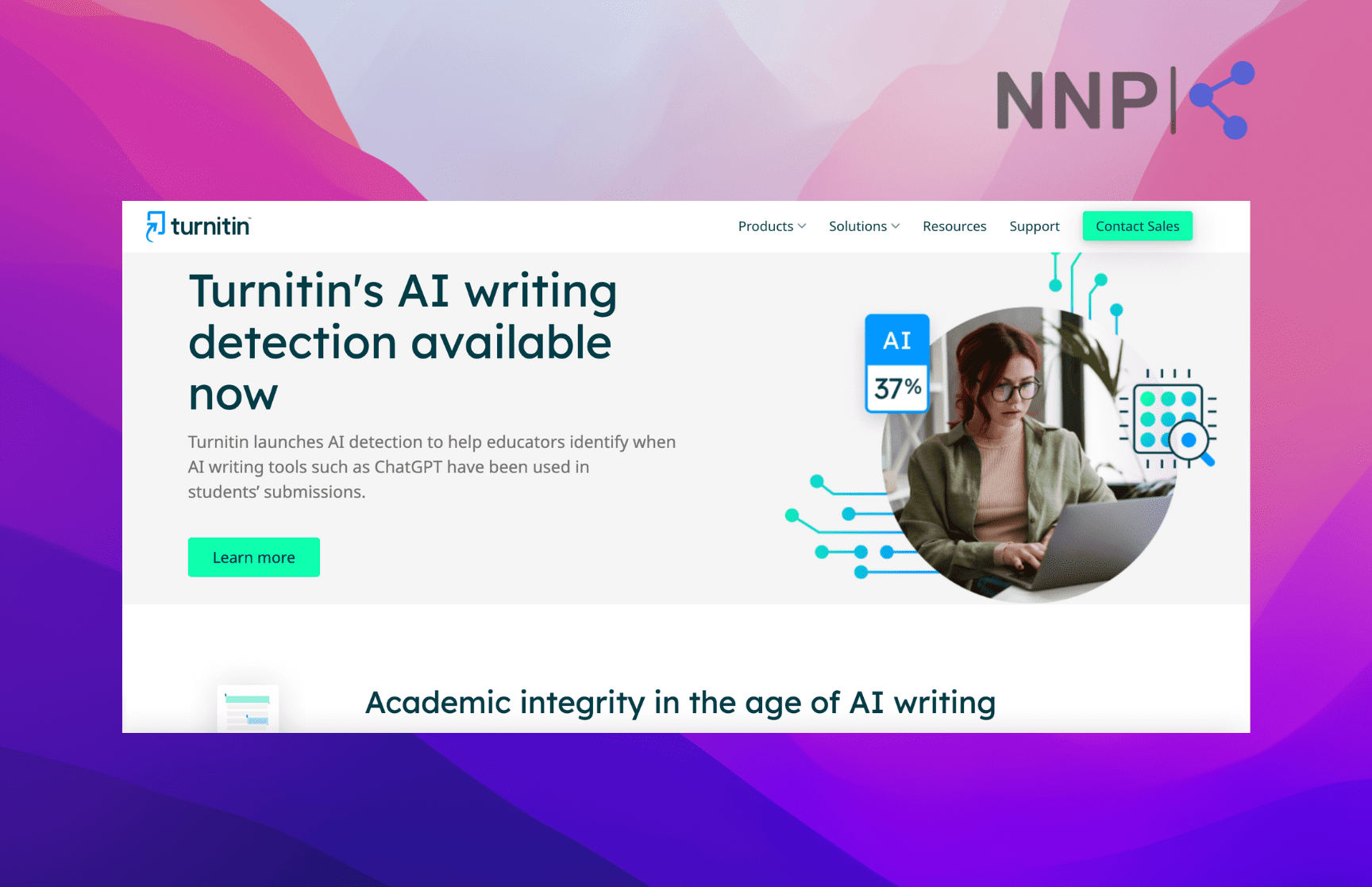
Turnitin is a tool universities use to detect plagiarism and ChatGPT-generated text. So if you are planning to use ChatGPT for your next written assignment and wondering whether Turnitin can detect ChatGPT, you might want to reconsider.
Turnitin AI text detector is the most popular tool used by educational institutions. The tool was originally only a plagiarism detection tool. However, after the launch and other AI writing chatbots, they have expanded their service with AI detection to identify AI-generated text to protect academic integrity. Turnitin claims their AI detector is 98% accurate in detecting AI-generated content.
Currently, Turnitin supports GPT-3 and GPT-3.5 language models, including ChatGPT, but they are working on expanding their AI detector’s capabilities to detect other models as well.
If you want to learn how Turnitin detects ChatGPT, check out our article.
Turnitin is available to universities and educational institutions - students can’t access it. It costs $3 per student yearly. If you are interested to see how it works, check out Turnitin’s preview of their AI detection tool.
Content At Scale
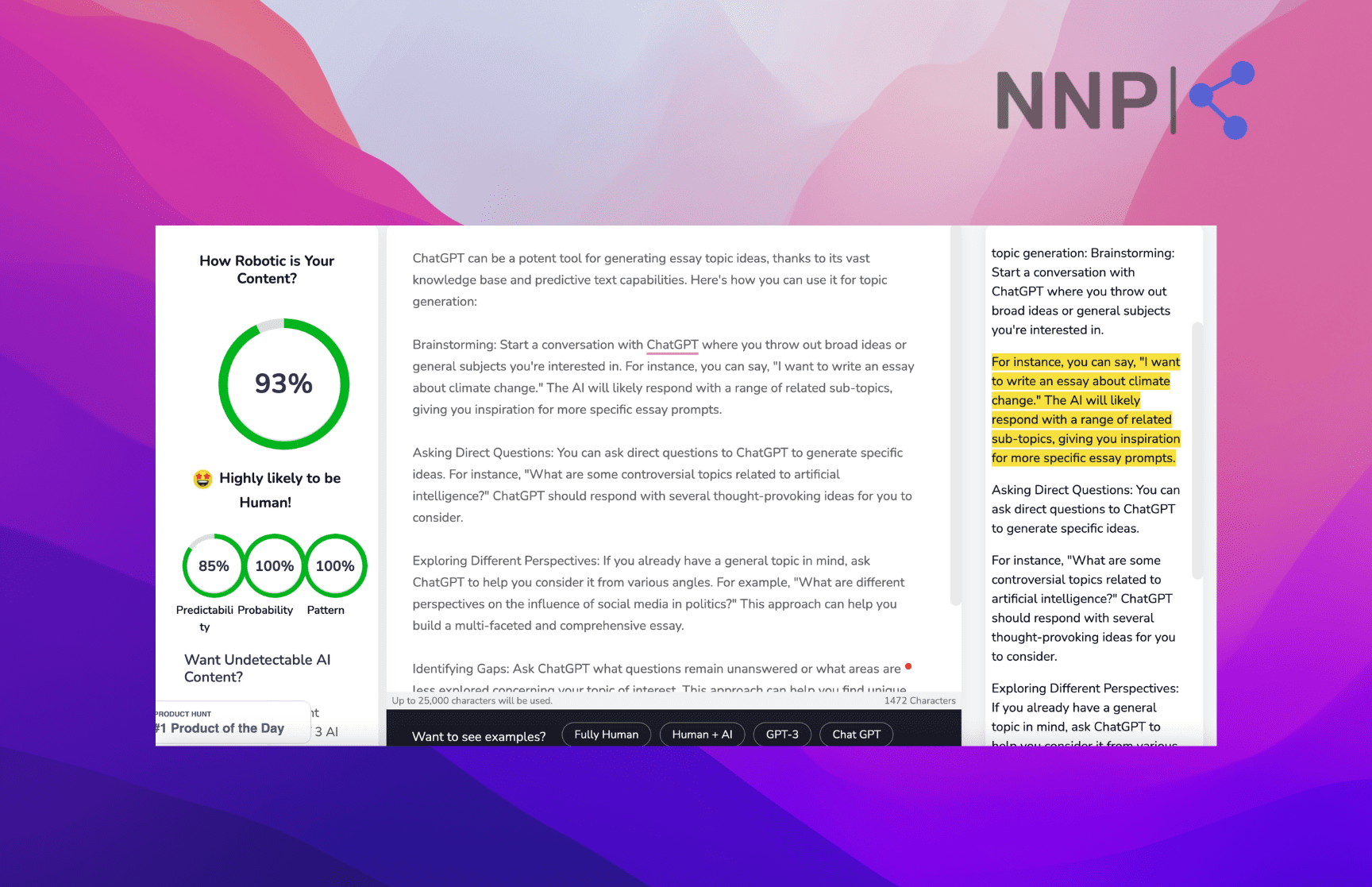
Content At Scale offers a highly advanced AI detector that is completely free. This detector is equipped with more advanced detection features than other similar tools. When you paste a text into the detector for analysis, it generates percentages of Predictability, Probability, and Pattern. These metrics measure the likelihood of the content being human-generated or AI-generated.
In addition to this, the AI detector also highlights the part of the text that has been generated by AI for convenience. It is important to note that the percentage shown on the left side of the output only represents the probability of the text being AI-generated, not the percentage of the text created by ChatGPT or AI.
For example, if the detector shows an 83% chance of the text being AI-generated, this does not necessarily mean that the remaining 17% is human-generated. Instead, it means that there is an 83% chance the text you submit is generated by AI.
Apart from showing the likeliness of a text being ChatGPT-generated, Content At Scale’s AI detectors also offers examples if you want to see and compare what fully human-generated content, human+Ai, ChatGPT, GPT-3 and Content At Scale generated content looks like.
Originality AI
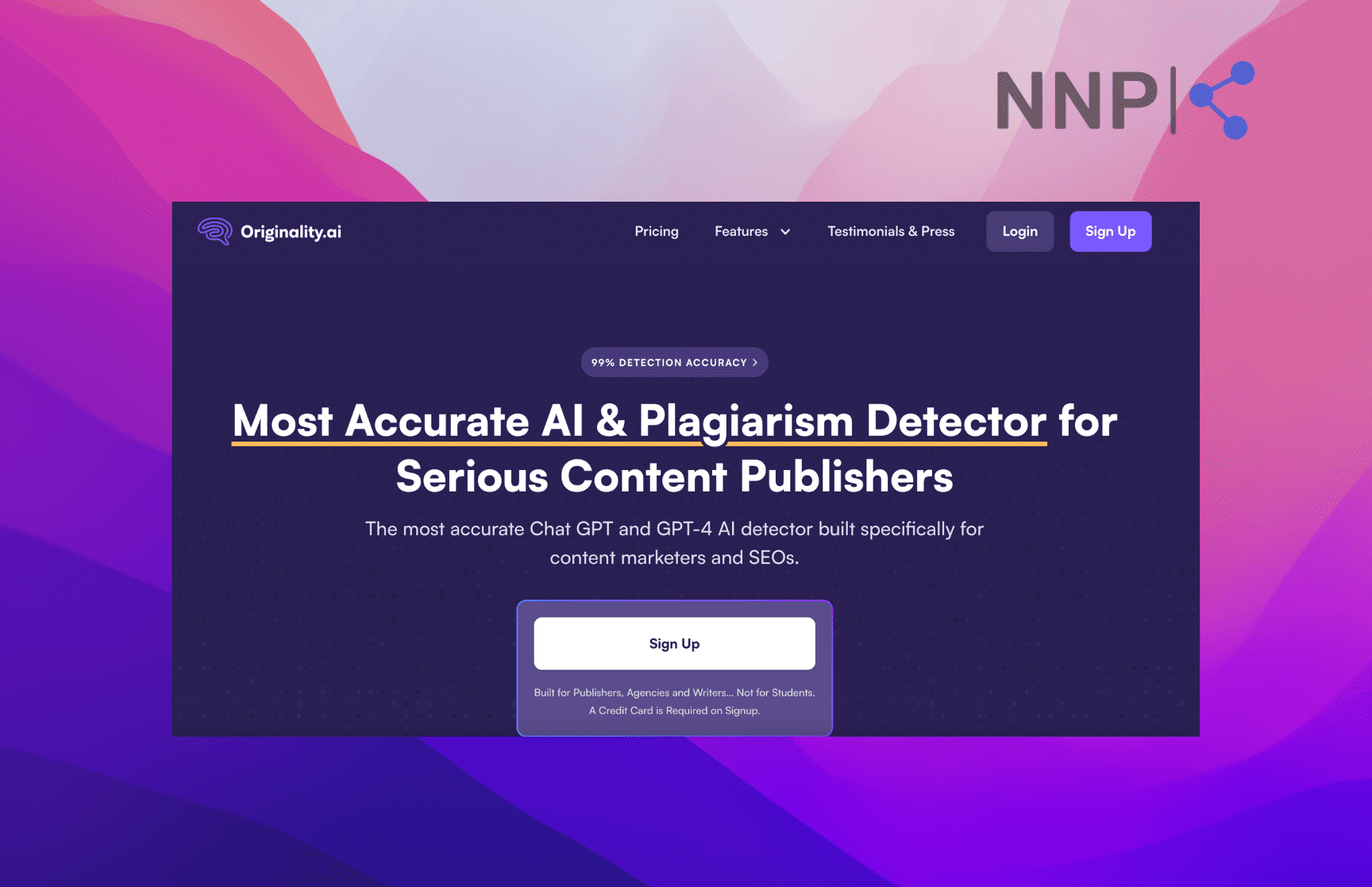
Originality AI is a plagiarism and AI content deception tool targeted to content publishers such as SEOs, content marketers, and website publishers, and not so much for students and academic organizations.
The AI detector is not free, but the subscription is relatively affordable at $20, with auto-renewal for $0.01 per credit (100 words).
The tool detects content generated by popular AI models like ChatGPT, GPT-2, GPT-3, GPT-4, Bard, and GPT-NEO, with an accuracy of 96% across a testing data set of 1200 samples.
What’s better, Originality.AI’s detector is also equipped to detect content that has been paraphrased with tools like Quillbot. It provides a score from 0-100 on the likelihood that the content scanned was produced by an AI writing tool.
GPTZero

GPTZero was one of the first AI detection tools that sprang up just days after ChatGPT started making news in the AI text generation domain. It’s a free, powerful AI detector designed to detect ChatGPT, GPT3, GPT4, Bard, and other AI models.
The tool is free for teachers and others and claims to detect work generated by ChatGPT more than 98 percent of the time.
GPTZero was created by Edward Tian, a senior at Princeton University majoring in computer science and minoring in journalism.
Tian was inspired to create GPTZero after the release of ChatGPT when he saw the potential this technology had to aid student cheating.
GPTZero also features the Origin AI Content Detector Chrome Extension, which helps you determine if the content you are reading online is AI-generated.
ZeroGPT
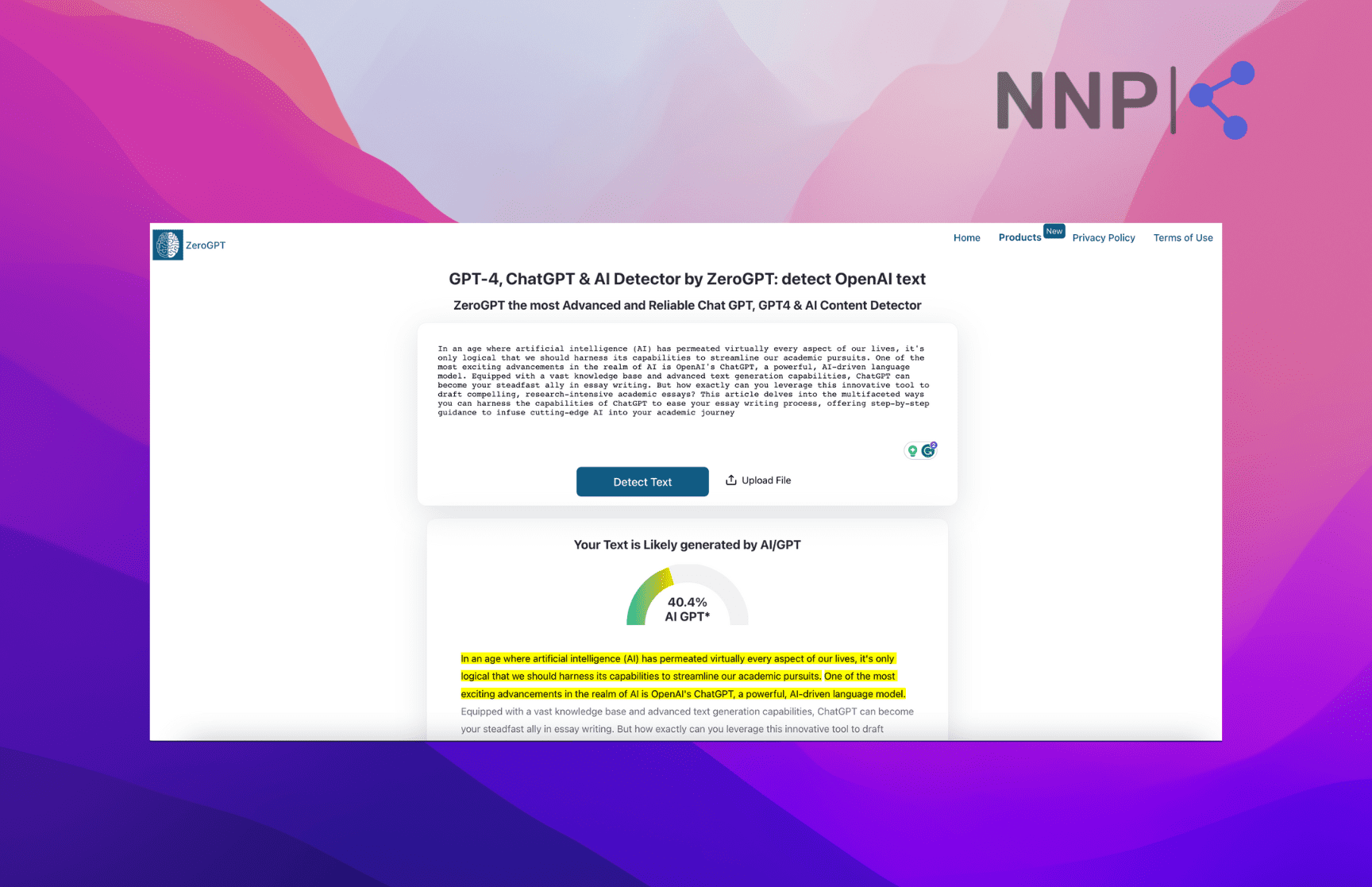
Similar to GPTZero, but with an inverted name, ZeroGPT is a 100% free AI detection tool beneficial for students, teachers, educators, writers, employees, freelancers, copywriters, and anyone else who wants to detect AI-generated text.
After ZeroGPT analyzes your text, it highlights the text suspected to be AI-generated and provides a likeliness percentage. Besides the percentage, ZeroGPT also gives the result from a range of modifiers depending on the probability and the confidence of the system, from “Your text is Human written” to “Your text is AI/GPT Generated” and everything in between.
ZeroGPT used 10 million articles written by AI and humans to develop their algorithm with 98% confidence.
Additionally, ZeroGPT values the privacy of its users. Any text inputted and checked on the platform will not be stored or shared online, and the AI detection model is not trained using user data.
Sum up
ChatGPT, the AI writing pal, has been a game changer for tons of folks, helping them whip up nifty texts for all sorts of stuff, from work to school assignments. But this has got people wondering about the originality of these AI-produced pieces. So, we've got a bunch of handy-dandy tricks and tools to tell if a text is a ChatGPT masterpiece or a human creation.
Additionally, there's also a load of cool AI-detecting tools out there to help you spot if ChatGPT was responsible for writing the text. But remember, these tools aren't foolproof. Sometimes they mix up human and AI texts, and people can trick them by tweaking the words or getting ChatGPT to write in a less AI-ish style.
Therefore, these tools should be one in many steps in assessing the quality and originality of a text.
-(2)-profile_picture.jpg)
